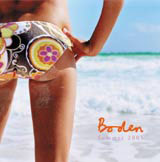Mail order retail in decline as Internet shopping booms

Last year Internet shopping overtook mail order catalogues as the most popular form of home shopping for the first time ever.
The days of the catalogue ‘big book’ may be numbered as consumers shun the old- fashioned format to embrace a more immediate form of home shopping. This gloomy prediction, outlined in a recent report carried out by consumer analyst Mintel, spells bad news for an industry that is already on the rocks. Figures reveal that while one in three adults bought products via the Internet in the previous 12 months, up from just 9 per cent in 2000, interest in mail order catalogues has fallen dramatically. In 2004, 25 per cent bought from a catalogue, compared to 53 per cent just four years earlier.
The European mail order catalogue market was worth some €43.5bn (£29.6bn) in 2003, accounting for around 3 per cent of all retail sales. This market is expected to grow fractionally to around €45.5bn (£31bn) by 2009, but by this time the mail order catalogue market will, in fact, make up just 2 per cent of all retail sales.
According to Mintel, the mail order industry is in stormy waters in part because it is failing to diversify and change its appeal. An overall lack of vision to create brave businesses strategies that will meet the challenges posed by Web-based competitors is exacerbating the problem.
‘The big book is the wrong format for this decade, as customers want a more clearly targeted offer. The trouble with the mail order industry at the moment is that it tends to see the Internet as a threat, where it should be seen as an opportunity,’ explains Richard Perks, director of retail research at Mintel.
The push to develop more specialist catalogues, differentiate an offer and consider other forms of retailing could all help reverse the downward trend, ‘Yet too few home shopping retailers are prepared to look beyond their own method of operation,’ adds Perks.
However, a select few are bucking the trend. Home shopping retailer Boden (two images from summer 2005 catalogue, pictured), for example, saw its sales jump more than 40 per cent last year to just over £85m in the year to 31 December.
‘Increasingly, on-line is becoming popular – it now makes up nearly 45 per cent of our business – but our catalogues are still very important and drive a lot of customers to purchase,’ says managing director at Boden, Julian Granville.
The Nest is currently working with catalogue retailer Pedlars to look at how it delivers its offer through its publications.
Freddie Baveystock, strategy and communications director at The Nest, believes the medium still has a lot of value.
He claims, ‘Catalogues are more relaxing and offer a value-filled experience, getting the consumer to feel the product, allowing them to dream – it is about fantasy. The Web’s ability to do this is limited.’
Catalogue retailers could lead the next generation of home shopping over the next decade, but they must adapt to meet the demands of a more sophisticated audience.
Home Shopping in the UK
• The home shopping market in Europe was worth €67.2bn (£45.8bn) in 2003, increasing to €68.2bn (£46.5bn) in 2004.
• Germany, the UK and France make up three-quarters of the home shopping market. In total, the countries account for almost €50bn (£34bn) of sales, which comprises almost three-quarters of the European home shopping market.
-
Post a comment




